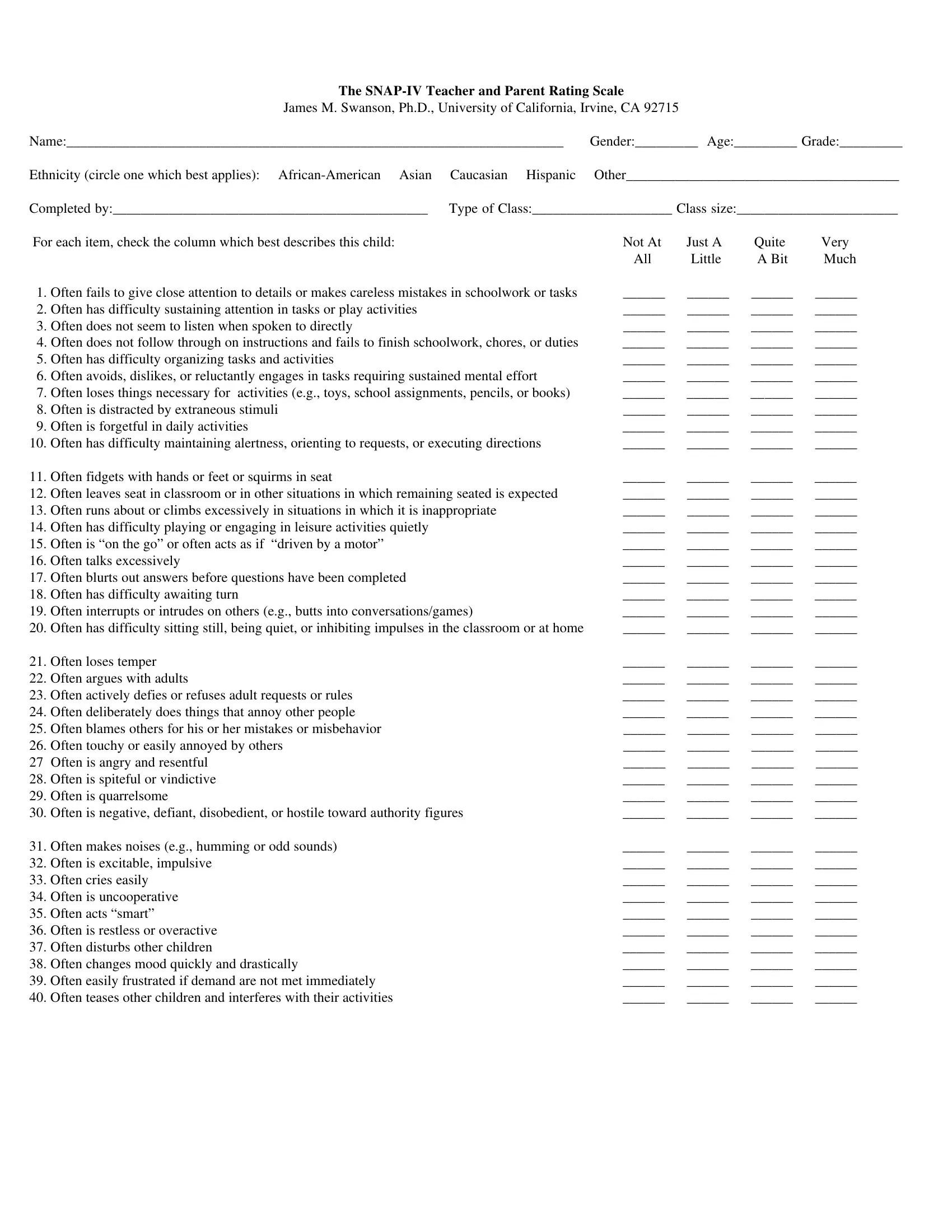snap forms online can be filled in with ease. Simply try FormsPal PDF tool to perform the job in a timely fashion. FormsPal team is constantly endeavoring to enhance the tool and insure that it is even easier for people with its cutting-edge functions. Enjoy an ever-evolving experience today! Getting underway is simple! Everything you should do is follow these basic steps down below:
Step 1: Click the "Get Form" button in the top part of this page to get into our PDF tool.
Step 2: The tool gives you the opportunity to work with PDF files in a range of ways. Transform it by including personalized text, adjust existing content, and include a signature - all close at hand!
As for the fields of this specific form, here is what you need to do:
1. Fill out the snap forms online with a number of necessary blanks. Gather all of the necessary information and make certain there's nothing forgotten!
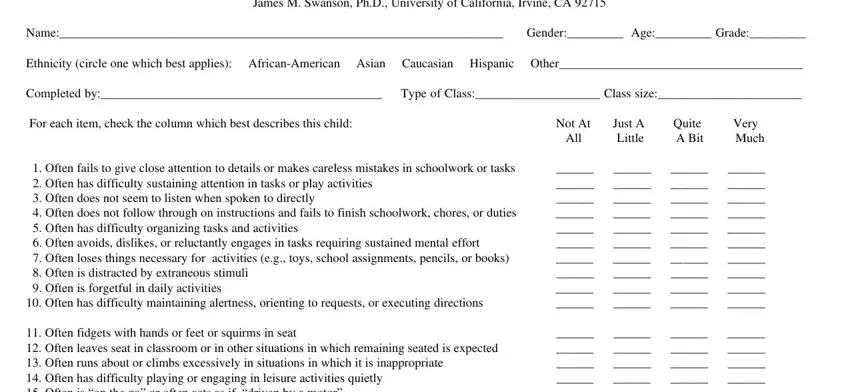
2. Once your current task is complete, take the next step – fill out all of these fields - Often fidgets with hands or feet, Often loses temper Often argues, and Often makes noises eg humming or with their corresponding information. Make sure to double check that everything has been entered correctly before continuing!
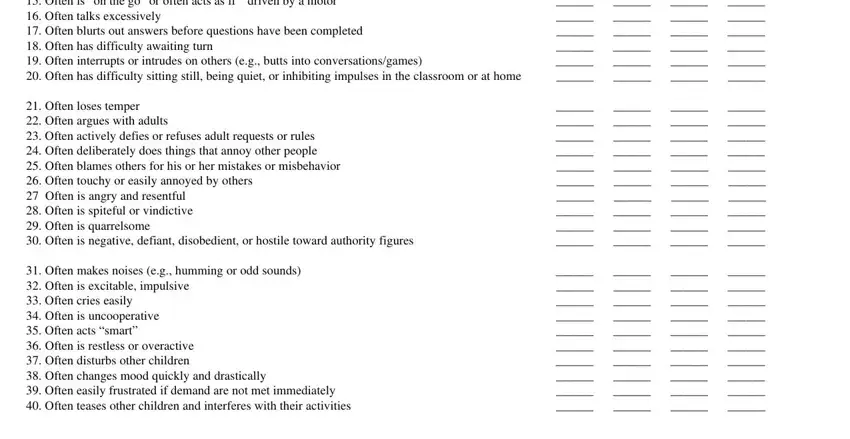
3. Through this stage, examine Check the column which best, Often is aggressive to other, Not At Just A Quite Very All, Has episodes of failure to resist, Often is restless or seems keyed, Often has daytime sleepiness, and Sometimes for at least a week has. Each of these are required to be filled in with highest accuracy.
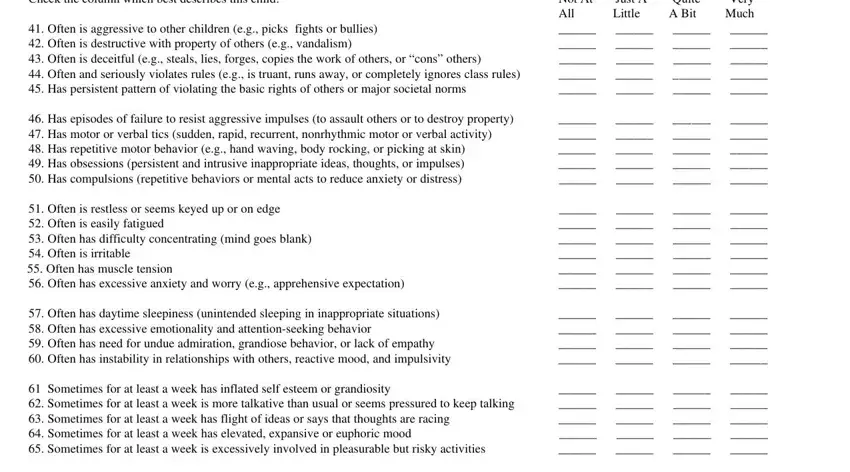
People who work with this document frequently make some mistakes when filling out Often has daytime sleepiness in this section. Ensure that you reread whatever you type in right here.
4. All set to complete this next section! In this case you'll get all of these Sometimes for at least weeks has, Chronic low selfesteem most of, Currently is hypervigilant overly, and Has difficulty getting started on empty form fields to fill out.
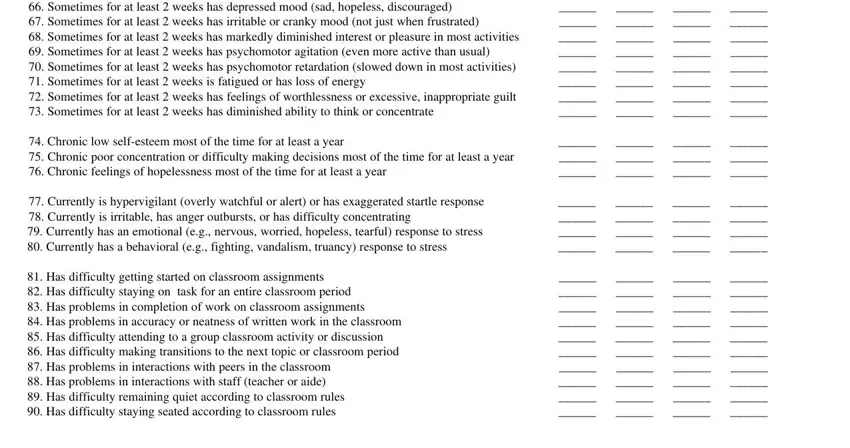
Step 3: Right after taking another look at the form fields, press "Done" and you're done and dusted! After setting up afree trial account here, you will be able to download snap forms online or send it via email without delay. The PDF file will also be available in your personal account page with your every modification. FormsPal is focused on the confidentiality of all our users; we ensure that all personal data used in our editor is kept confidential.
